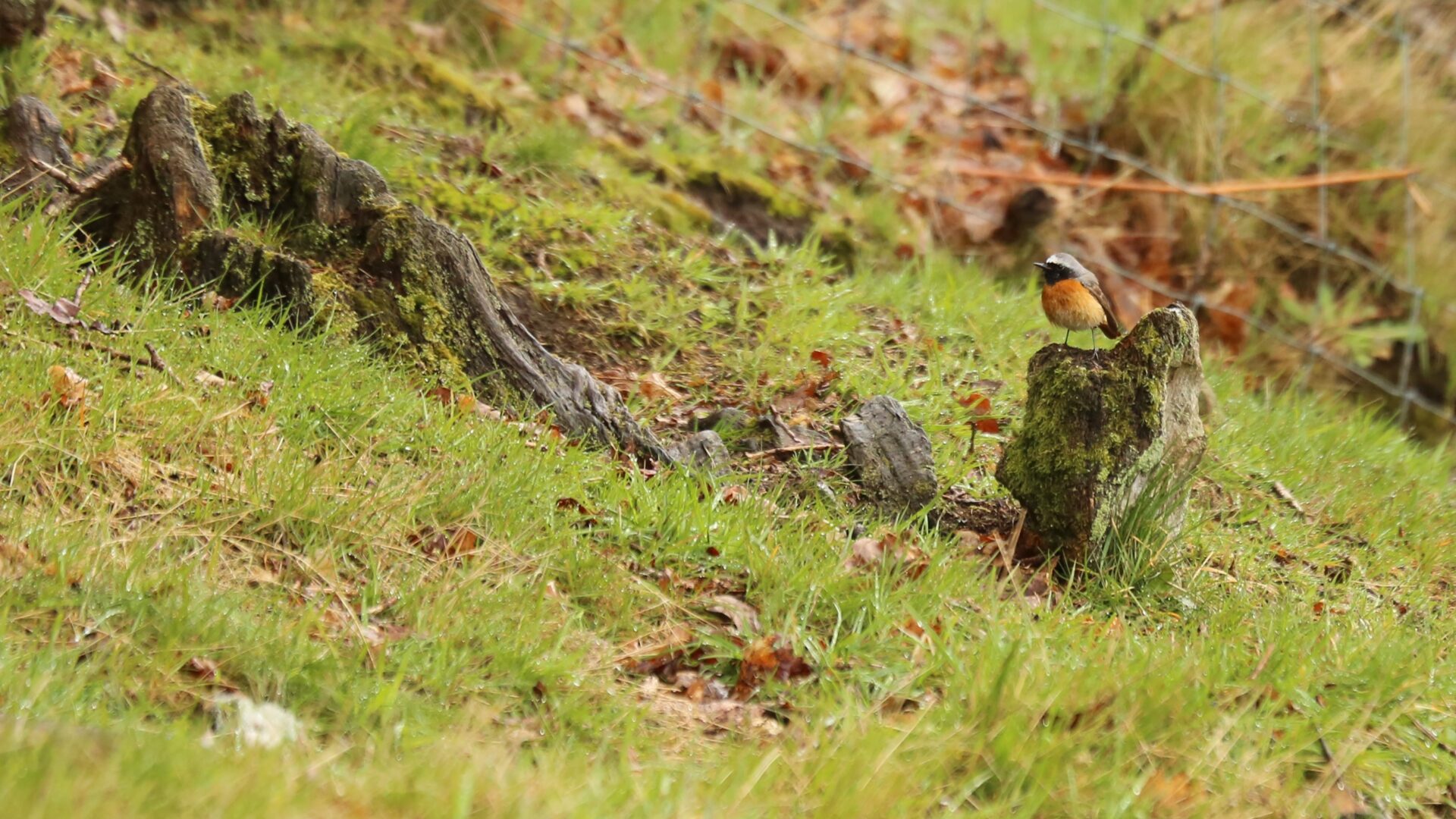
Look Wild: Birds on the Edge
-
Date posted: 11/12/2024
-
Time to read: 8 minutes
Birds on the Edge is a National Lottery Heritage Funded project run by the North York Moors Trust with the goal of preserving four at risk bird species in the area, namely the Turtle Dove, Yellowhammer, Song Thrush, and Redstart. The project aims to establish and conserve habitats for these birds, implement a monitoring program using volunteers, and actively engage individuals from areas like Scarborough and Bridlington, introducing them to the wonders of nature and hands-on conservation experiences within the National Park.
The project has been running since January 2023 and we’ve started with restoring ponds, creating drinking pools with volunteers, with more pond work scheduled for this winter.
The project also involves 28 primary schools in a ‘Harry Spotter’ birdwatch challenge within their school premises. This initiative serves the dual purpose of educating children about the local wildlife residing right outside their window and offering them the chance to acquire knowledge about topics such as birdsong, migration patterns, and the collection of scientific data.
Find out more about these four amazing species that thrive on the edges of woodland and farmland, then head out into the North York Moors National Park and see what birds you can spot.
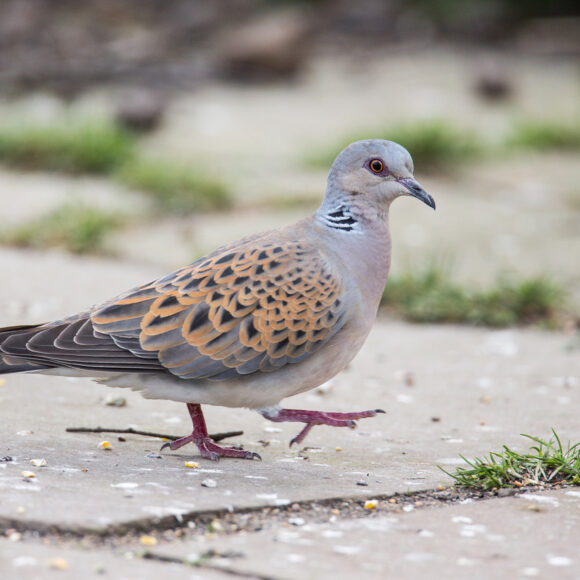
Turtle Dove
The Turtle Dove is a unique migratory dove that is entrenched deeply in our culture. Previously found across large parts of England, its range has now shrunk mainly into south-eastern England, but we have managed to hold onto a small population of just under 100 pairs in North Yorkshire. They spend the summer here before migrating 5,500 kilometres to spend the winter in western Africa. They have declined by an alarming 98% since the 1970s, due to a multitude of factors, including habitat loss, agricultural intensification leading to reduced food availability, pesticide use, climate change, and the challenges faced during migration.
With our unique Turtle Dove Grant Scheme, wildflower plots have been cultivated and sown by farmers especially for Turtle Doves. The plots are designed to grow important seed-bearing flowers such as Common Fumitory, Black Medick and Birds-foot Trefoil. A reliable source of water is essential and thanks to funding from Yorkshire Water, National Lottery Heritage Fund and the Farming in Protected Landscapes scheme, we have been able to create and restore a series of ponds and drinking pools.
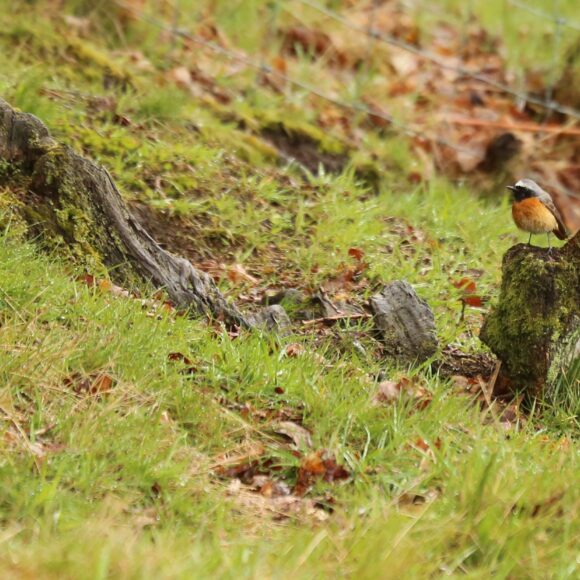
Redstart
The Redstart is a small, elegant bird that catches the eye with its vivid colouration. Males are particularly striking, with a bright orange-red tail, a slate-grey back, and a black face, contrasted by a white forehead. The song of the Redstart is a delightful and varied series of phrases, often described as a mix of whistles and trills. Males sing from prominent perches, using their song to establish territory and attract mates.
Redstarts favour open woodlands, parklands, and gardens with plenty of trees and shrubs, they migrate to Africa for the winter. The Redstart is currently on the amber list of birds of conservation concern, its populations can be affected by habitat loss and changes in land use.
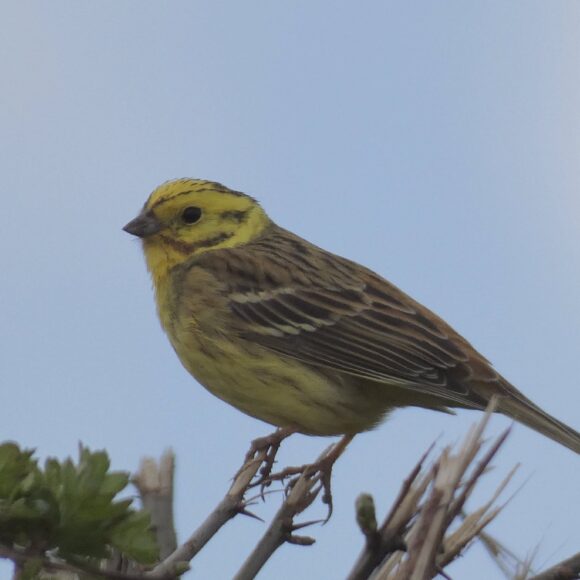
Yellowhammer
In the UK, few birds bring as much vivid colour as the Yellowhammer. This medium sized Bunting, with its distinctive song, has long been a favourite among birdwatchers and nature enthusiasts. They are a bird of farmland and open scrubland and have suffered from agricultural intensification, leading to a 62% decline between 1967-2020 and causing them to be placed on the UK red list for conservation status.
Yellowhammers are primarily ground feeders, often seen foraging in fields and along hedgerows. Their diet mainly consists of seeds, which they expertly extract with their strong beaks, but they also consume insects, especially during the breeding season when extra protein is needed for their growing chicks.
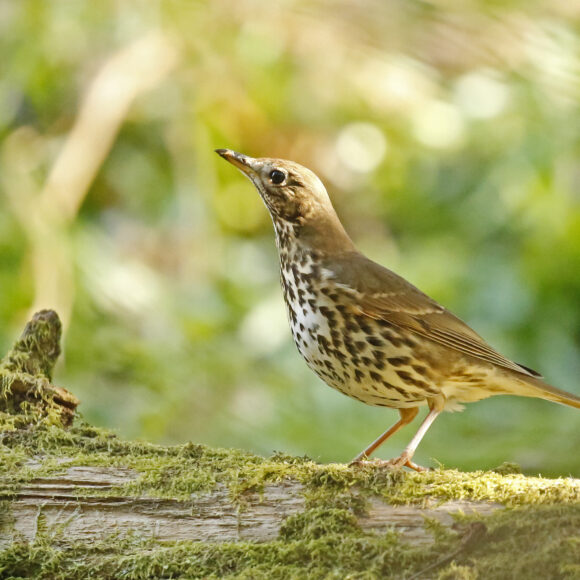
Song Thrush
The Song Thrush is a remarkable songbird. Their song is a true masterpiece of the avian world. It is a rich, melodious medley of phrases, each repeated two or three times before moving on to the next. They also have a unique feeding technique of smashing snail shells on rocks to break their shells. This rock is known as the Thrushes ‘anvil’ and you can often find these rocks near to hedgerows with the tell-tale broken snail shells by the side of them.
The Song Thrush is on the Amber list of birds of conservation concern in the UK with their population undergoing a 49% decrease since 1967. While it is not currently classified as a threatened species, it has experienced population declines in some regions due to habitat loss and changes in land use. Conservation efforts are crucial to ensure the continued well-being of this charming songbird.
Find out more about the Birds on the Edge project on the North York Moors Trust website.
This blog was written by Tim Jones, Birds on the Edge Project Officer at North York Moors National Park Authority
Photography by Alan Gray, Richard Bennett and Richard Baines.